Structural Optimization of a Giant Magnetostrictive Actuator Based on BP-NSGA-II Algorithm
Abstract
:1. Introduction
2. The Basic Structure of a GMA
3. Multiphysical Field Coupled Simulation Calculation
3.1. Geometric Models
3.2. Mathematical Model of Physical Field
3.3. Electromagnetic Field–Structural Field Simulation Results
3.4. Electromagnetic Field–Temperature Field Simulation Results
4. BP Neural Network Model
4.1. Input and Output Variable Selection
4.2. Construction of BP Neural Network Model
5. Structural Optimization Based on BP-NSGA-II Algorithm
5.1. Choice of Objective Function
5.2. Optimization Results
6. Analysis and Verification of Optimization Results
6.1. Finite Element Simulation Verification
6.2. Optimization Model Verification
6.3. Experimental Verification
7. Results
- (1)
- The simulation data obtained through finite element software was used to establish a BP model that maps the relationship between the magnetic circuit structural parameters and the performance indicators of the GMA. After training and testing, the BP model exhibited a lower RMSE and a higher R2 value, demonstrating its capability to accurately predict the performance indicators of the GMA.
- (2)
- The BP-NSGA-II algorithm was applied to perform a multi-objective optimization of the BP neural network model. The results indicate that after optimization, the maximum axial magnetic induction intensity on the GMM rod increased from 0.87 T to 1.12 T; the uniformity of axial magnetic induction intensity improved from 93.1% to 96.5%; and the loss of the coil decreased from 7.79 × 104 W/m3 to 4.97 × 104 W/m3. By comparison, the training time for the BP-NSGA-II algorithm is 87 s, while the computation time for the NSGA-II algorithm is 169 s. Additionally, the BP-NSGA-II algorithm also outperforms the NSGA-II algorithm in terms of performance parameter optimization results, confirming the effectiveness of the BP-NSGA-II algorithm.
- (3)
- Based on the optimization results, a prototype of the GMA was fabricated. Testing confirmed that the GMA achieves a displacement range of 0 to 90 µm within the operational frequency range, with consistent output performance, thereby satisfying the design criteria. This validates the effectiveness of the proposed comprehensive optimization design approach, offering valuable guidance for the high-efficiency, multi-objective structural optimization of GMAs.
- (4)
- The properties of GMM are affected by temperature. In order to precisely control the output of GMA, further optimization on the structure of the cooling system is required.
Author Contributions
Funding
Data Availability Statement
Conflicts of Interest
References
- Wang, A.; Meng, J.; Xu, R.; Zang, Y. Simulation and Experiment of High-Power Giant Magnetostrictive Actuator. Instrum. Technol. Sens. 2019, 4, 79–85. [Google Scholar]
- Söderberg, O.; Sozinov, A.; Ge, Y.; Hannula, S.-P.; Lindroos, V. Giant magnetostrictive materials. Smart Mater. Struct. 2006, 16, 1–39. [Google Scholar]
- Liu, J.; Jiang, C.; Xu, H. Giant magnetostrictive materials. Sci. China Technol. Sci. 2012, 55, 1319–1326. [Google Scholar] [CrossRef]
- Koon, N.; Williams, C.; Das, B. Giant magnetostriction materials. J. Magn. Magn. Mater. 1991, 100, 173–185. [Google Scholar] [CrossRef]
- Zhu, Y.; Liu, C.; Song, Y.; Chen, L.; Jiang, Y.; Wu, C. Research on an axial-mounted dual magnetostrictive material rods-based electro-hydrostatic actuator. J. Intell. Mater. Syst. Struct. 2022, 33, 330–341. [Google Scholar] [CrossRef]
- Zheng, J.; He, Z.; Zhou, J.; Xue, G.; Rong, C.; Bai, G. Structure design and output displacement modeling of a giant magnetostrictive actuator for a servo valve. J. Vib. Shock 2019, 38, 83–89. [Google Scholar] [CrossRef]
- Zhang, B.; Jin, K.; Kou, Y.; Zheng, X. The model of active vibration control based on giant magnetostrictive materials. Smart Mater. Struct. 2019, 28, 085028. [Google Scholar] [CrossRef]
- Li, P.; Liu, Q.; Li, W.; Zhou, X.; Wang, L.; Wang, D.; Yuan, Q. Structure of giant magnetostrictive ultrasonic transducer. J. Vib. Shock 2021, 40, 196–201. [Google Scholar] [CrossRef]
- Jia, Z.; Liu, H.; Wang, F.; Liu, W.; Ge, C. A novel magnetostrictive static force sensor based on the giant magnetostrictive material. Measurement 2011, 44, 88–95. [Google Scholar] [CrossRef]
- Yang, L.; Meng, J.; Rui, T.; Decang, L.; Gaoyang, M. Magnetic Circuit Simulation and Optimization of Giant Magnetostrictive Actuator Based on COMSOL. J. Lanzhou Jiaotong Univ. 2023, 42, 79–84. [Google Scholar] [CrossRef]
- Li, Y.; Dong, X.; Yu, X. Magnetic energy losses and temperature control system for giant magnetostrictive transducer. Sci. Rep. 2023, 14, 177. [Google Scholar] [CrossRef] [PubMed]
- Zhao, Z.; Sui, X. Temperature compensation design and experiment for a giant magnetostrictive actuator. Sci. Rep. 2021, 11, 251. [Google Scholar] [CrossRef] [PubMed]
- Li, Y.; Huang, W.; Wang, B.; Weng, L. High-frequency output characteristics of giant magnetostrictive transducer. IEEE Trans. Magn. 2019, 55, 8202305. [Google Scholar] [CrossRef]
- Tu, J.; Liu, Z.; Li, Z. Magnetic circuit optimization design and finite element analysis of giant magnetostrictive actuator. J. Chongqing Univ. 2021, 44, 52–63. [Google Scholar] [CrossRef]
- Wang, A.; Meng, J.; Xu, R. Structural optimization and dynamic performance study of a super magnetostrictive exciter. Vib. Shock 2019, 38, 184–190. [Google Scholar] [CrossRef]
- Huang, W.; Guo, W.; Guo, P.; Xia, Z. Optimization design of high frequency magnetostrictive transducer based on the multi-objective genetic algorithm. Chin. J. Sci. Instrum. 2022, 43, 111–119. [Google Scholar] [CrossRef]
- Jiang, M.; Rui, X.; Yang, F.; Zhu, W.; Zhang, Y. Multi-objective optimization design for a magnetorheological damper. J. Intell. Mater. Syst. Struct. 2022, 33, 33–45. [Google Scholar] [CrossRef]
- Liu, Q.; He, X. Magnetic circuit optimization design and thermal analysis of the giant magnetostrictive transducer. Ultrasonics 2023, 133, 107031. [Google Scholar] [CrossRef] [PubMed]
- Tan, C.; Li, B.; Liu, Y.; Ge, W.; Sun, B. Multiphysics methodology for thermal modelling and quantitative analysis of electromagnetic linear actuator. Smart Mater. Struct. 2019, 28, 087001. [Google Scholar] [CrossRef]
- Song, S.; Xiong, X.; Wu, X.; Xue, Z. Modeling the SOFC by BP neural network algorithm. Int. J. Hydrogen Energy 2021, 46, 20065–20077. [Google Scholar] [CrossRef]
- Cui, Y.; Liu, H.; Wang, Q.; Zheng, Z.; Wang, H.; Yue, Z.; Ming, Z.; Wen, M.; Feng, L.; Yao, M. Investigation on the ignition delay prediction model of multi-component surrogates based on back propagation (BP) neural network. Combust. Flame 2022, 237, 111852. [Google Scholar] [CrossRef]
- Abdolrasol, M.G.; Hussain, S.M.S.; Ustun, T.S.; Sarker, M.R.; Hannan, M.A.; Mohamed, R.; Ali, J.A.; Mekhilef, S.; Milad, A. Artificial neural networks based optimization techniques: A review. Electronics 2021, 10, 2689. [Google Scholar] [CrossRef]
- Gong, J.; Liu, F.; Wu, Y.; Zhang, Y.; Lei, S.; Zhu, Z. Design of Raman Fiber Amplifier Based on Neural Network and Artificial Bee Colony Algorithm. Acta Opt. Sin. 2021, 41, 24–32. [Google Scholar] [CrossRef]
- Tong, J.; Li, Y.; Liu, J.; Cheng, R.; Guan, J.; Wang, S.; Liu, S.; Hu, S.; Guo, T. Experiment analysis and computational optimization of the Atkinson cycle gasoline engine through NSGA II algorithm using machine learning. Energy Convers. Manag. 2021, 238, 113871. [Google Scholar] [CrossRef]
- Zhang, Z.; Liao, C.; Chai, H.; Ni, X.; Pei, K.; Sun, M.; Wu, H.; Jiang, S. Multi-objective optimization of controllable configurations for bistable laminates using NSGA-II. Compos. Struct. 2021, 266, 113764. [Google Scholar] [CrossRef]
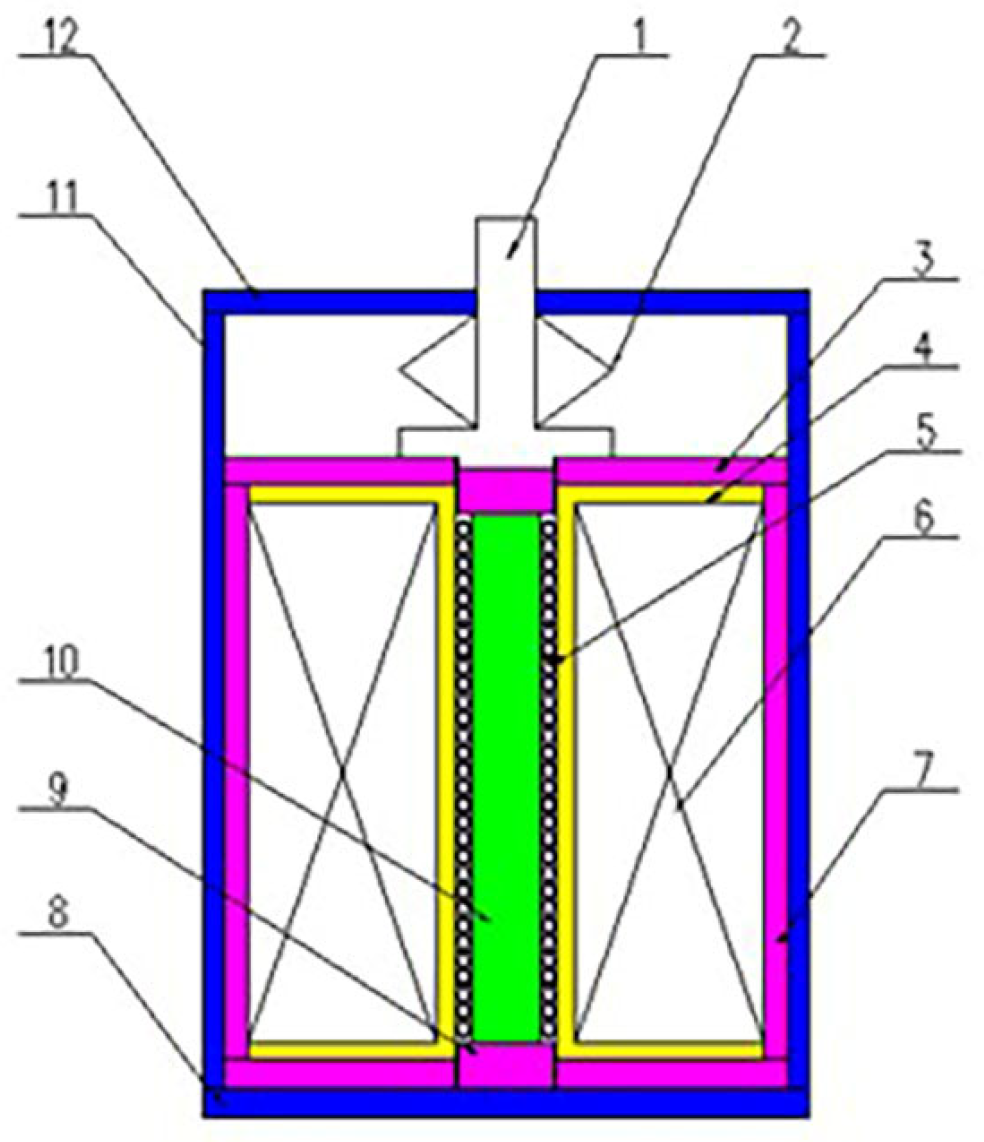
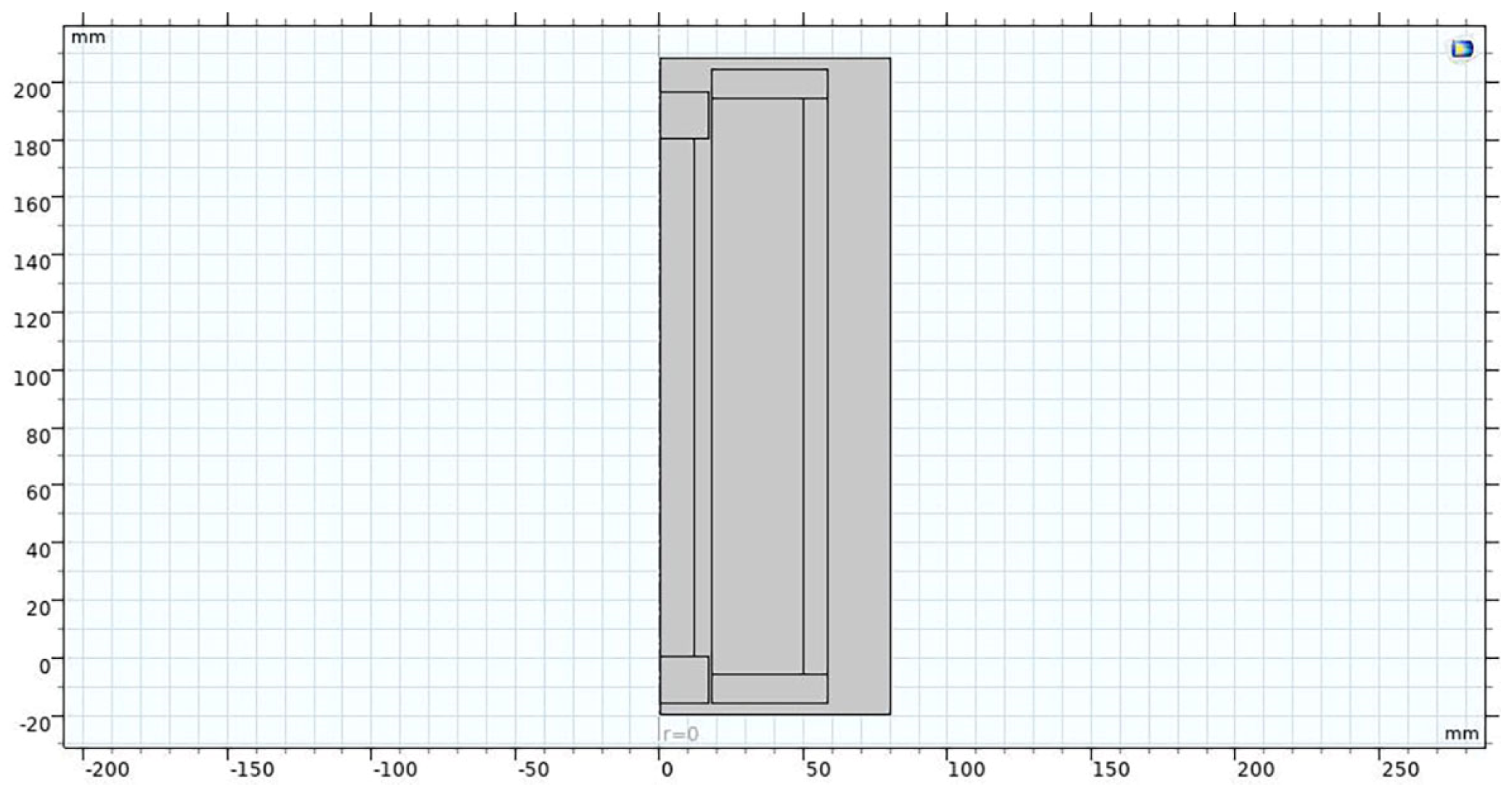
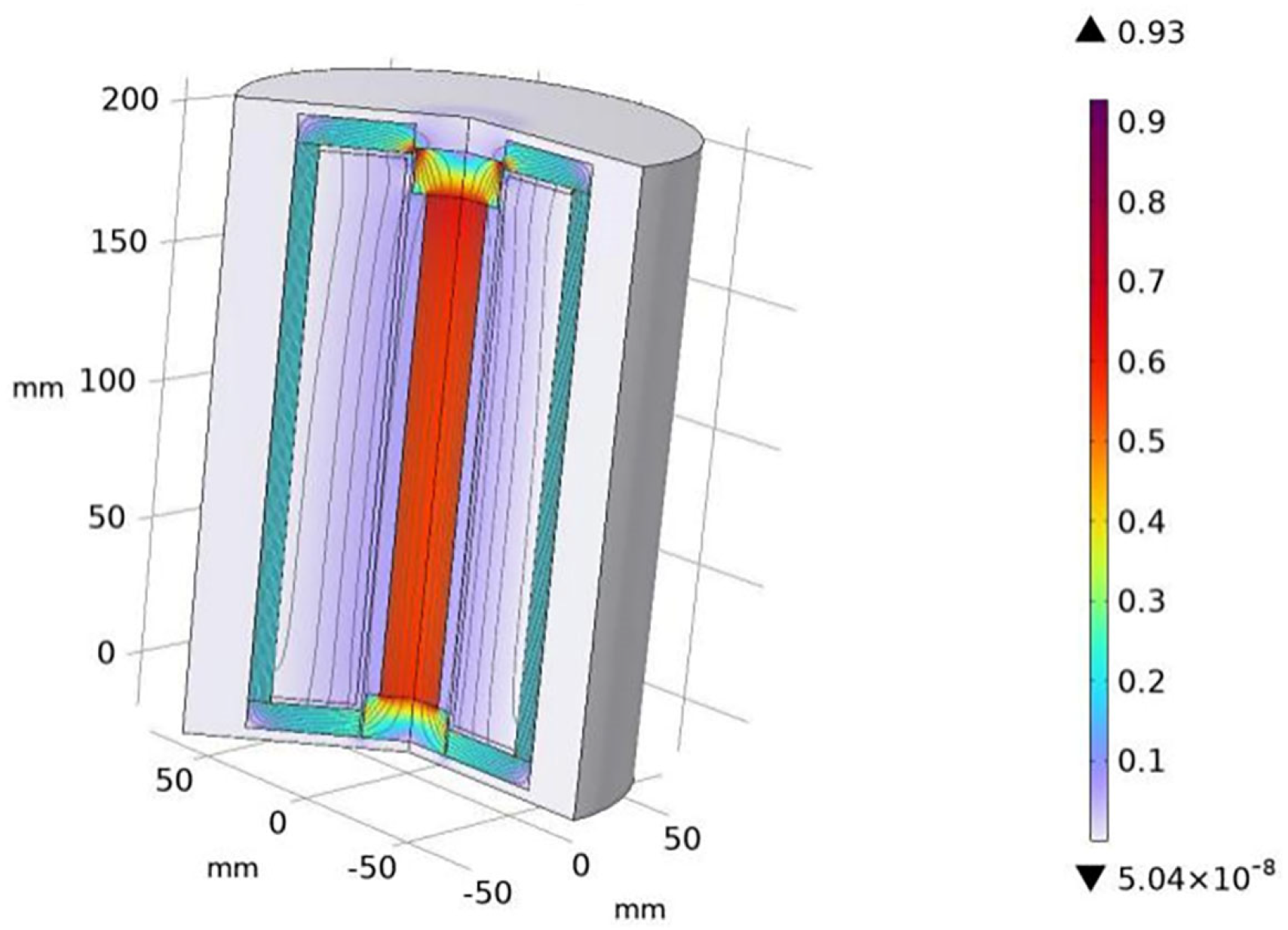
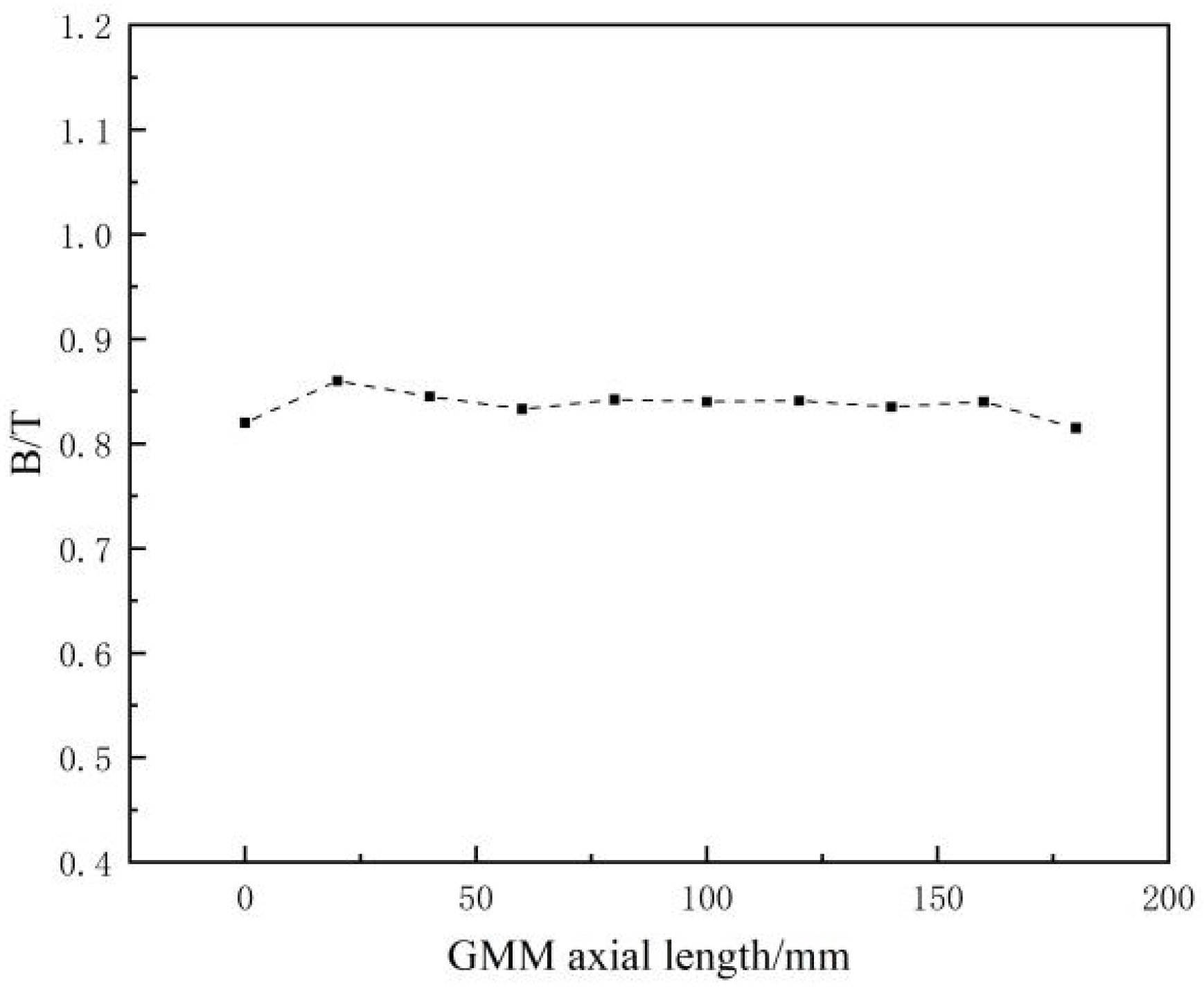
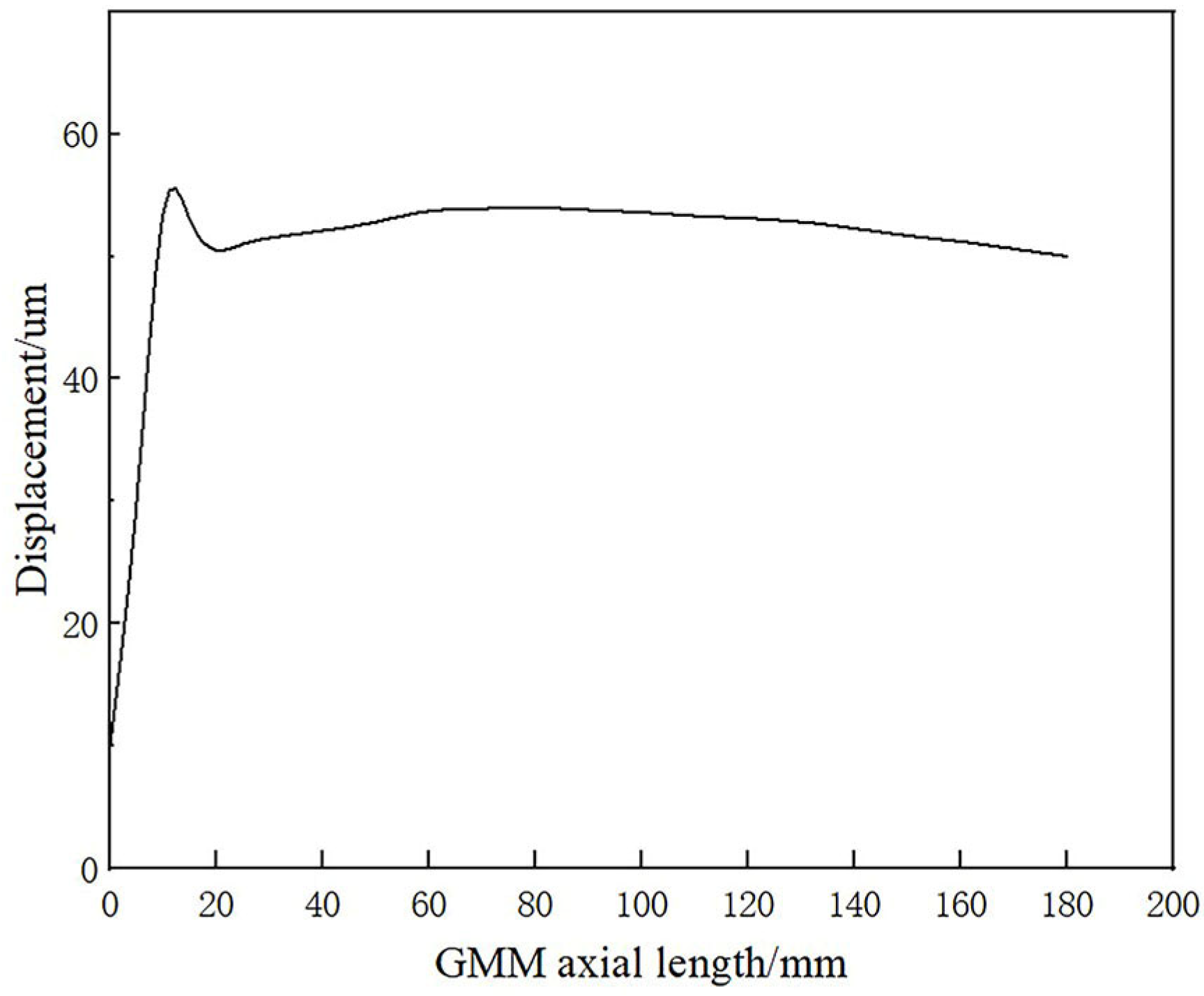
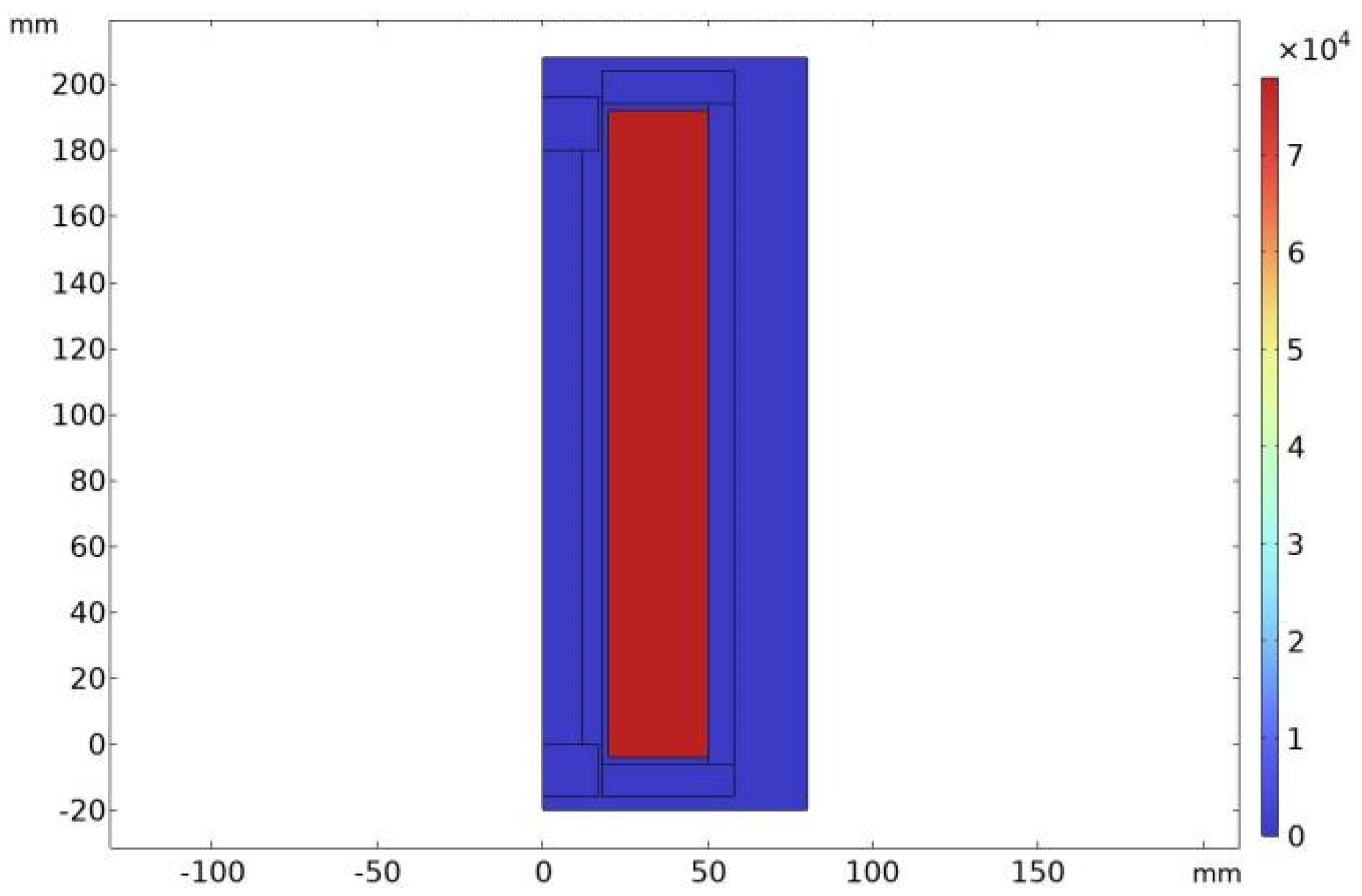

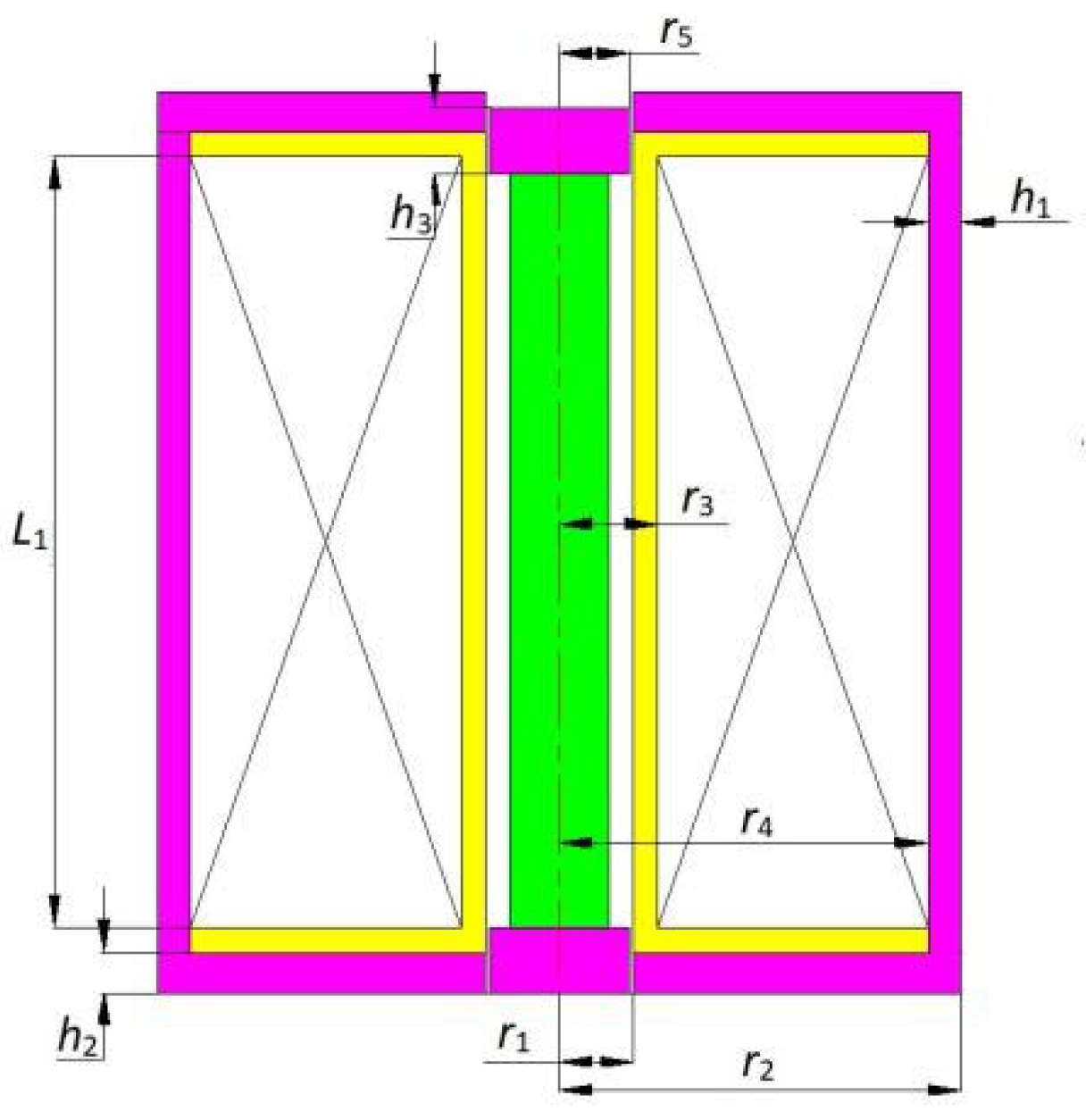
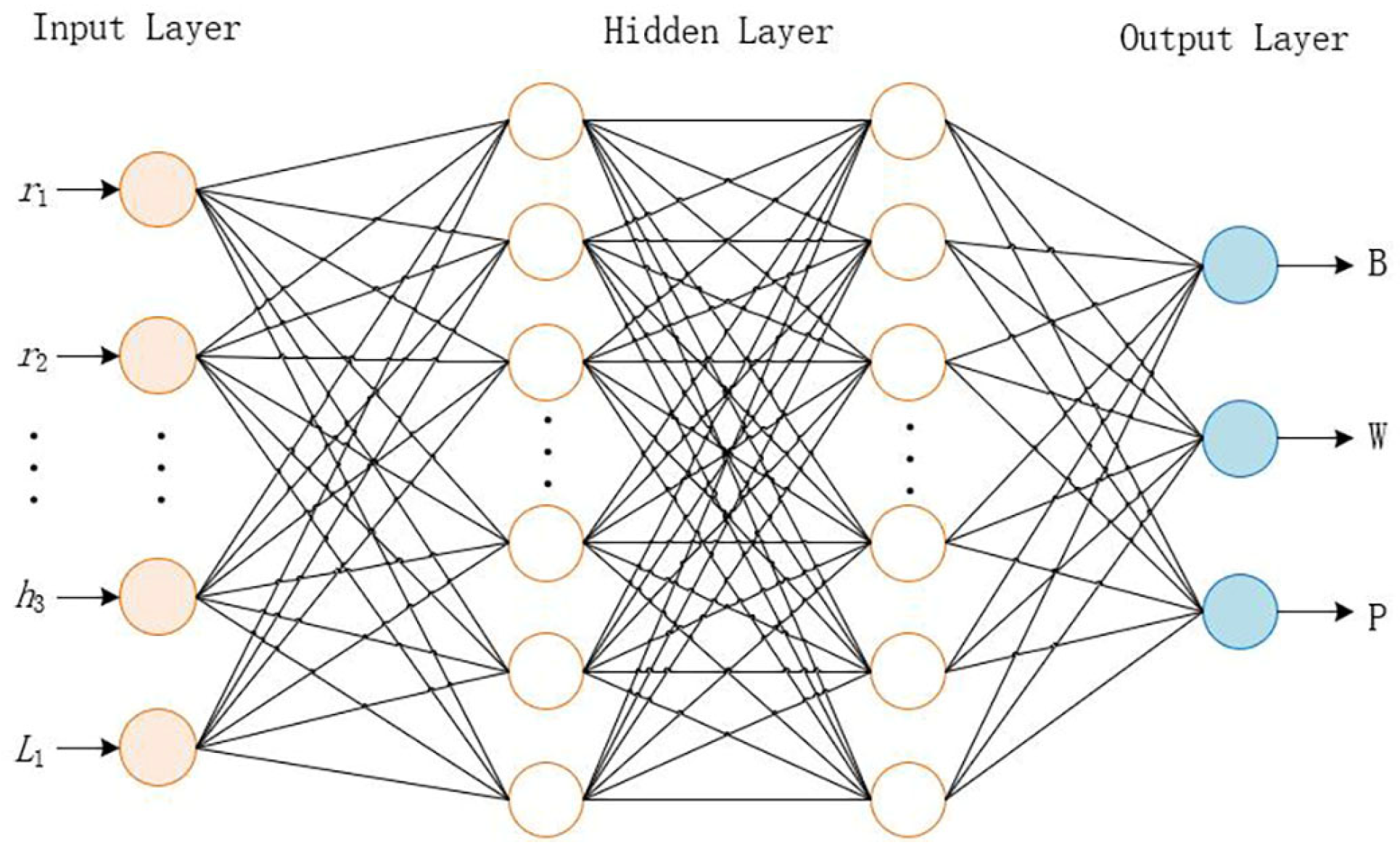
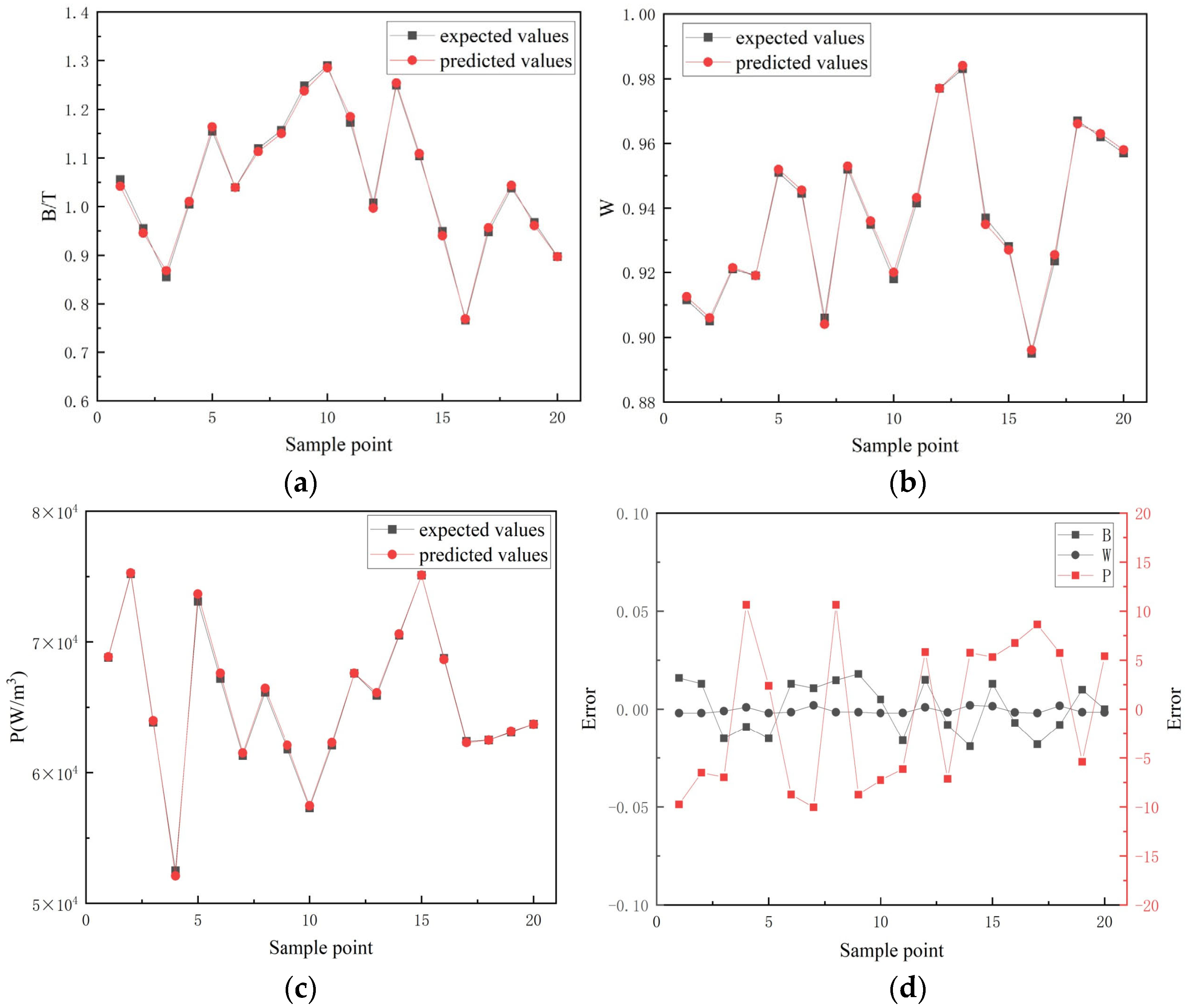


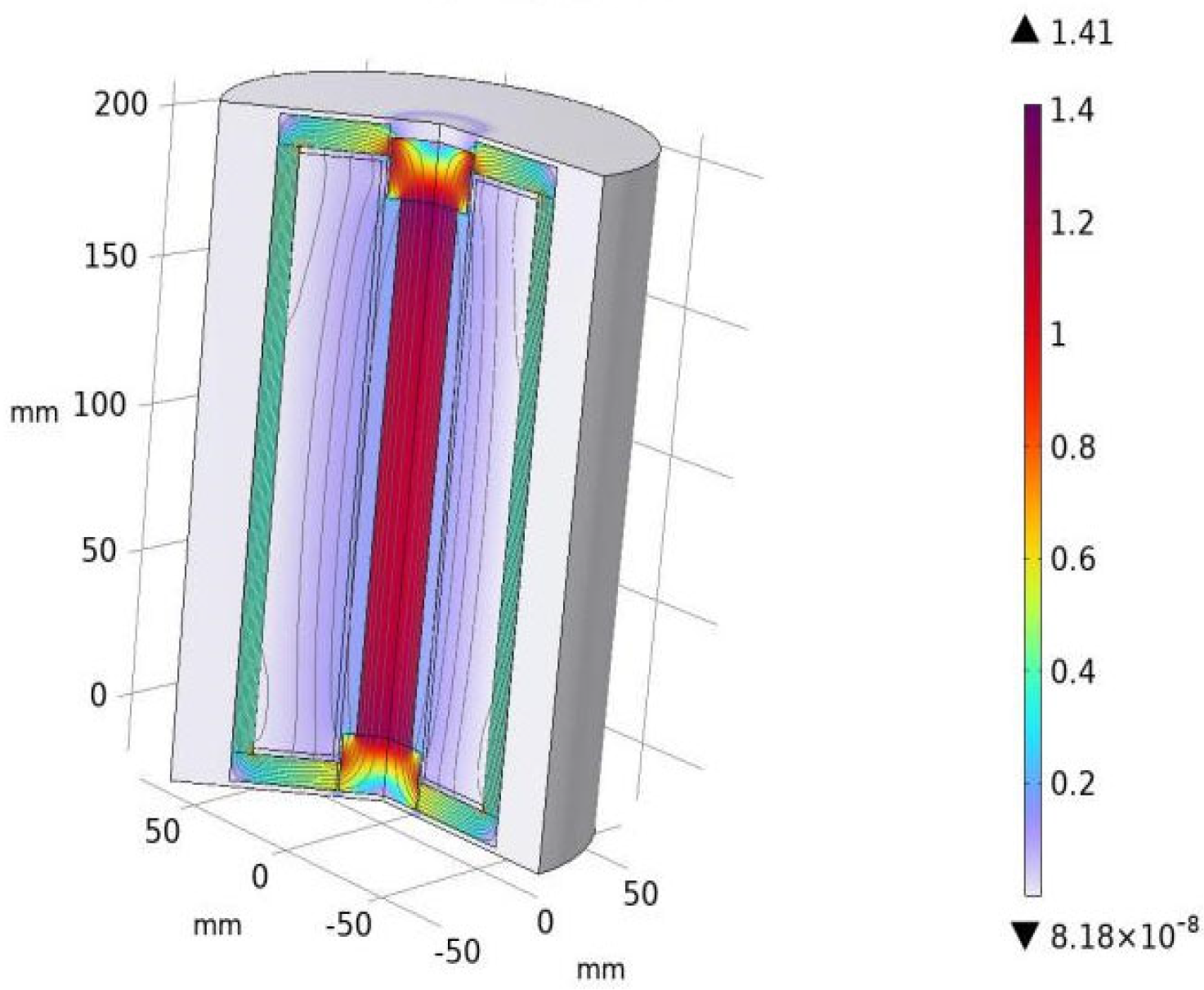
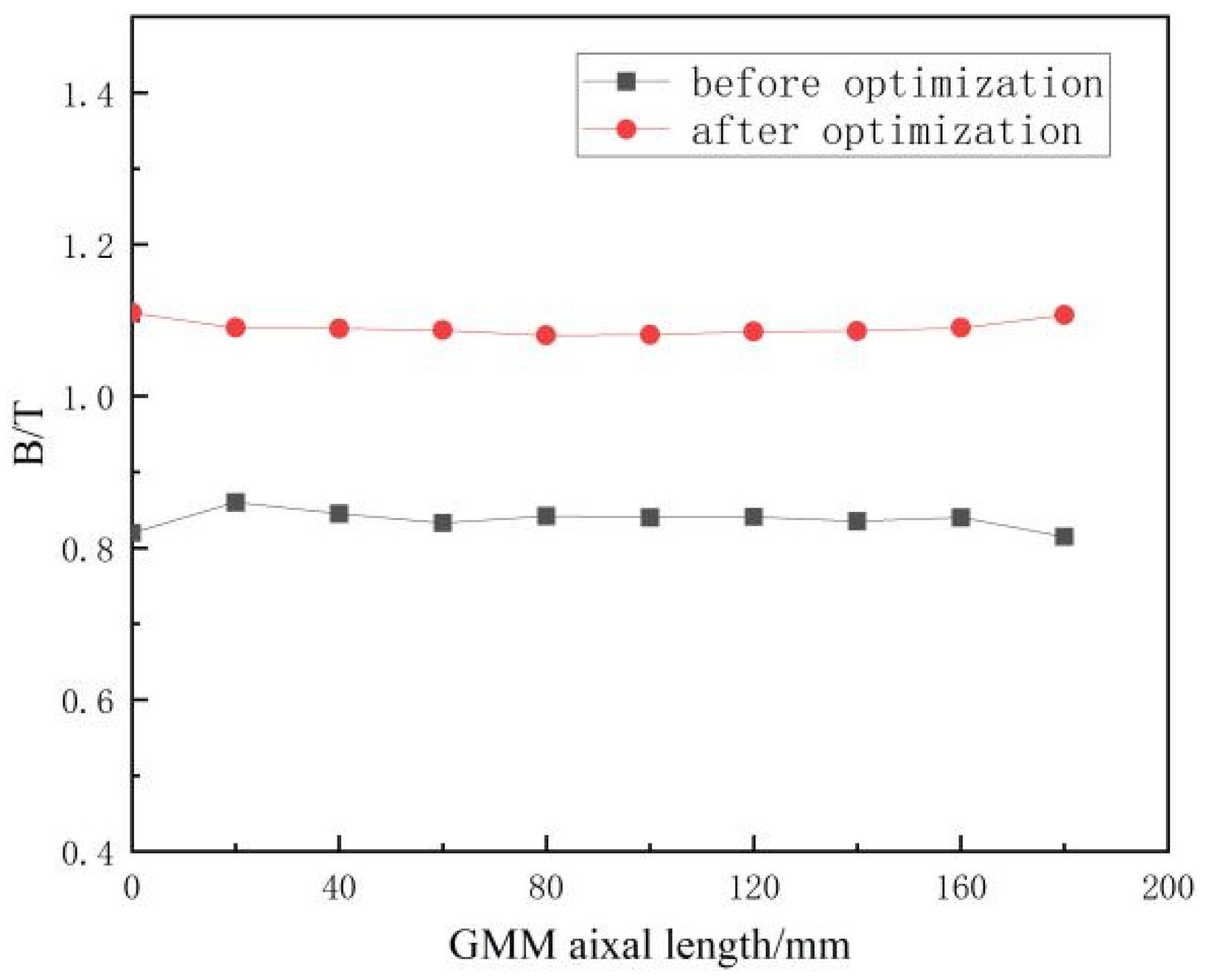
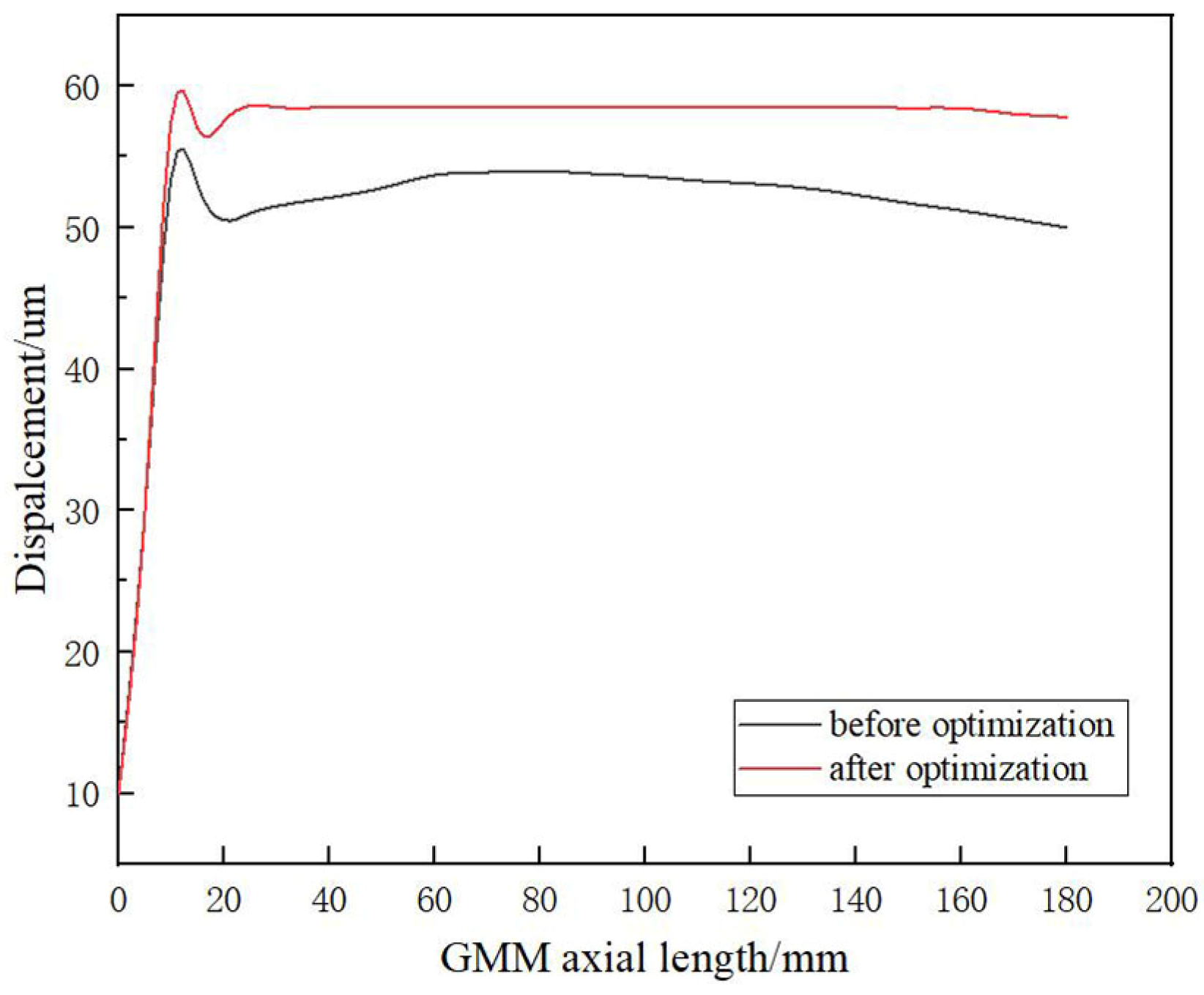
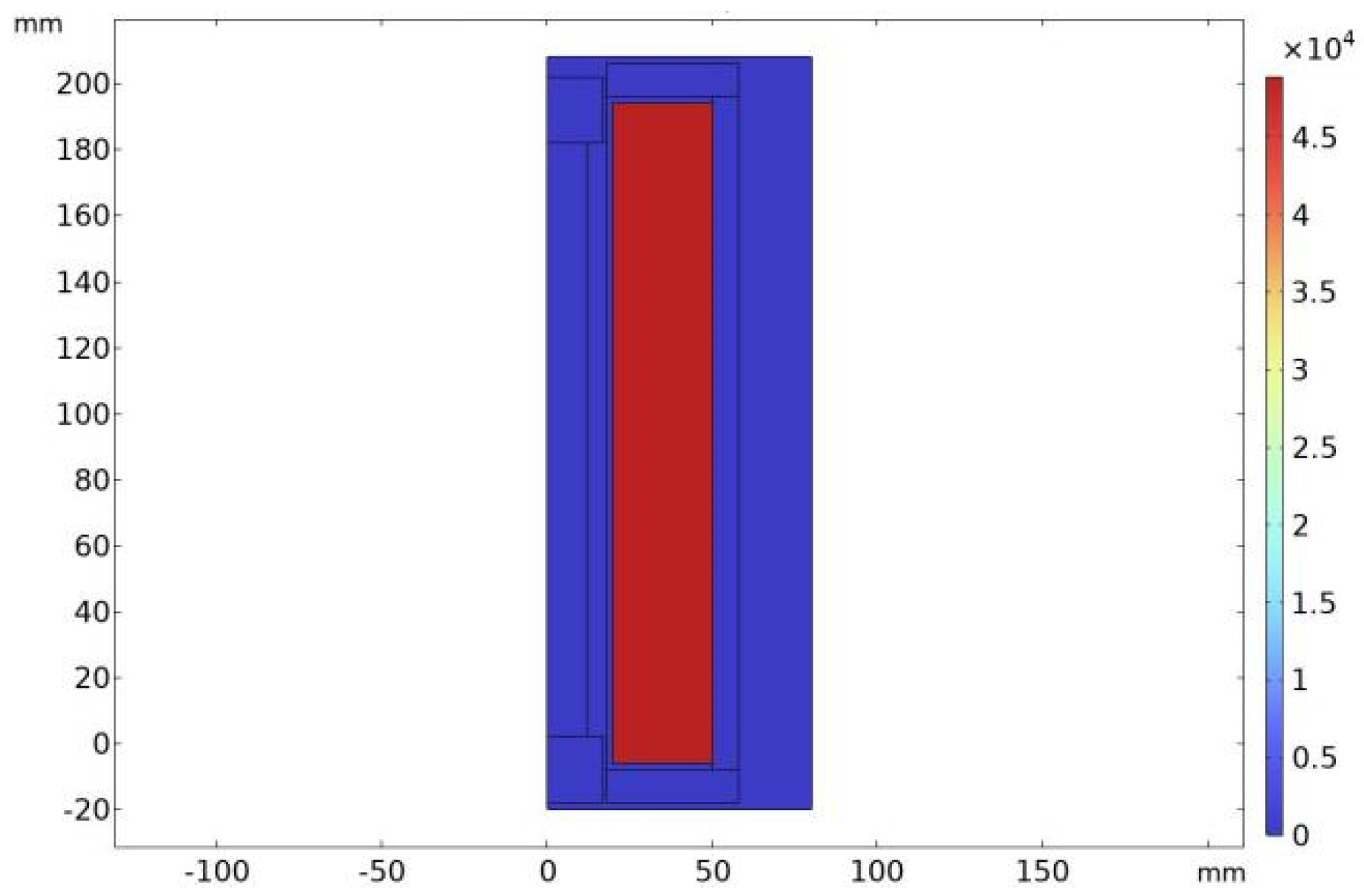

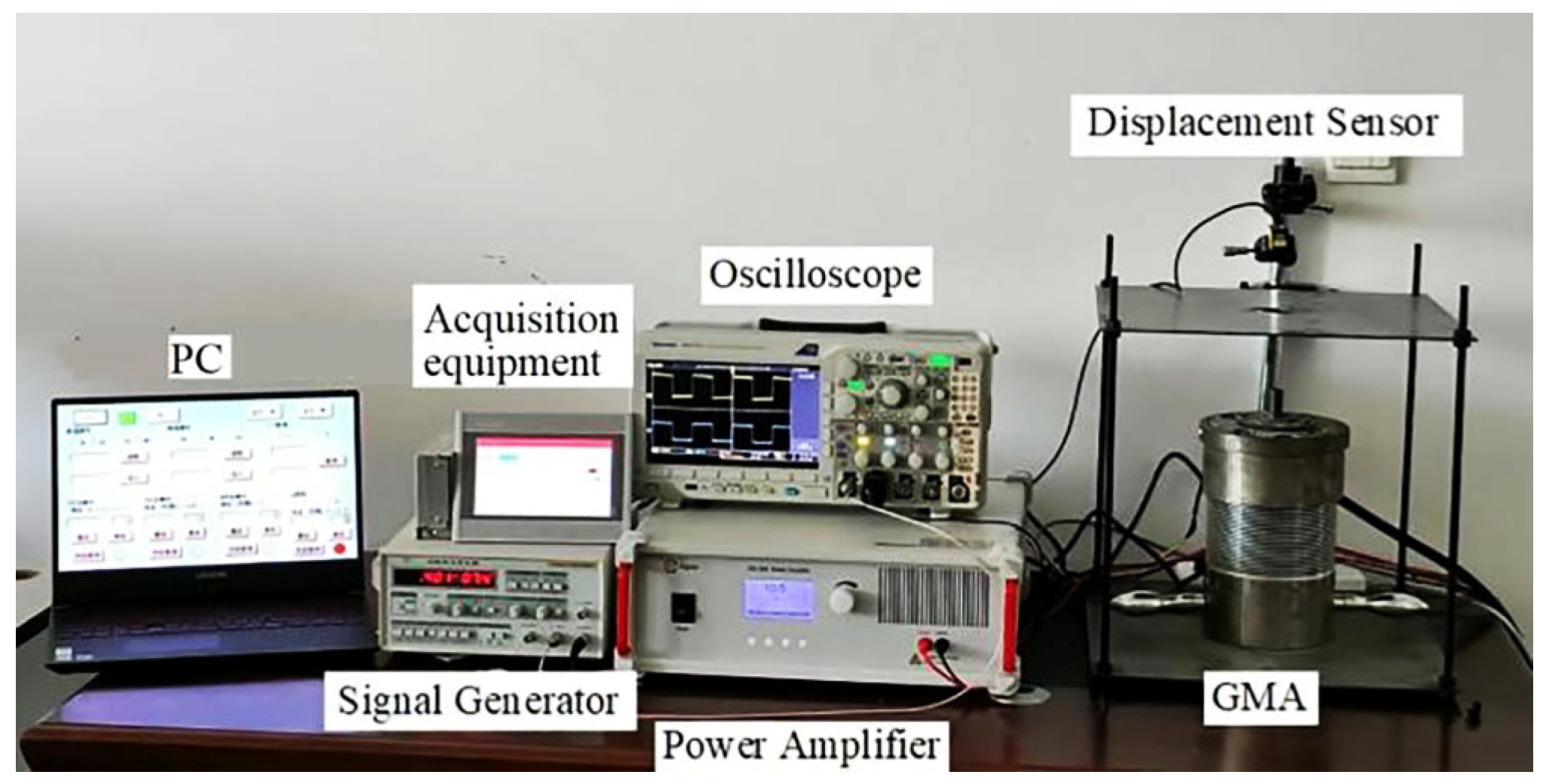

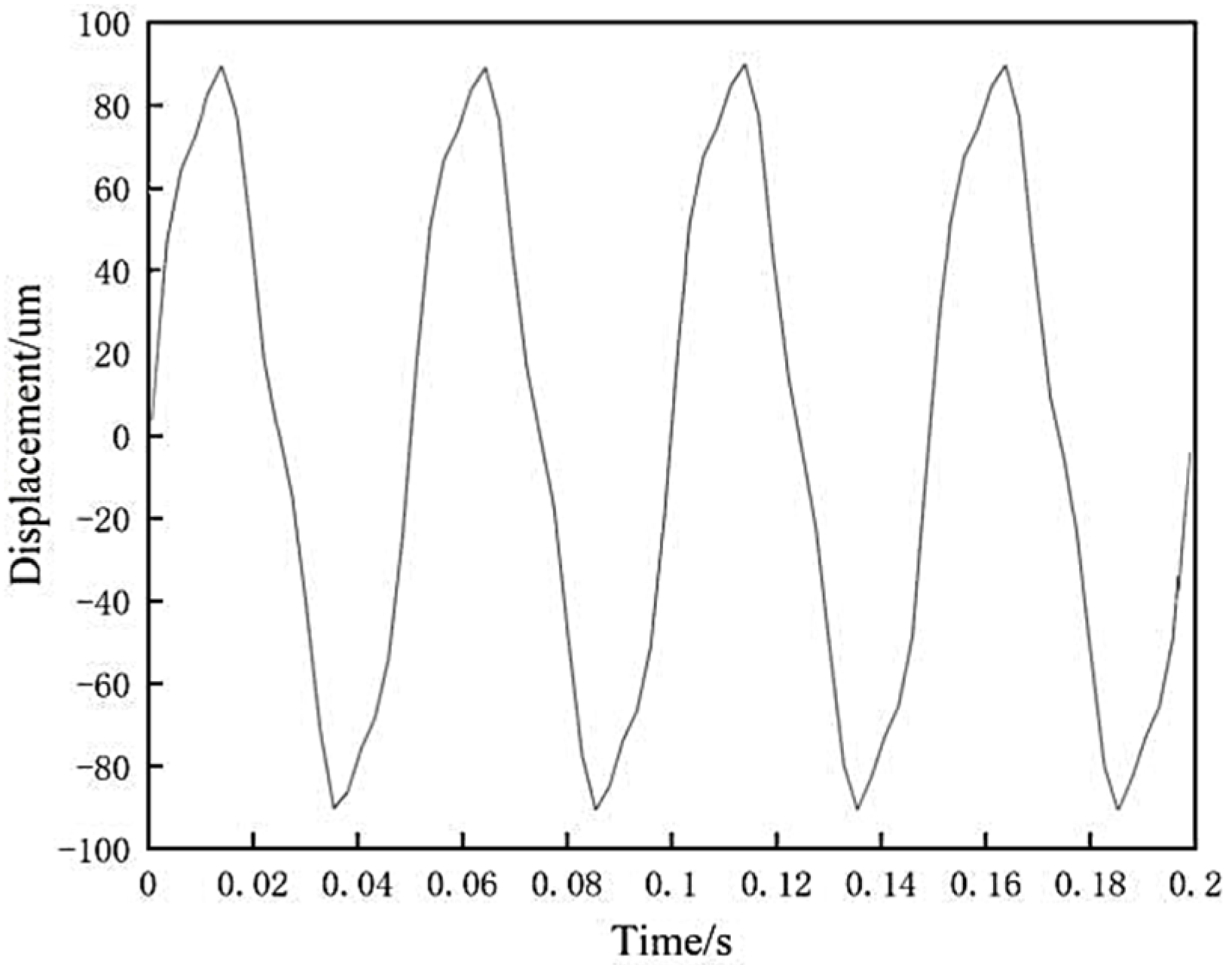
| Parameter | Value/mm |
|---|---|
| GMM rod diameter | 24 |
| GMM rod length | 180 |
| Coil inner radius | 14 |
| Coil outer radius | 32 |
| Coil length | 196 |
| Magnetic conducting ring inner diameter | 18 |
| Magnetic conducting ring outer diameter | 49 |
| Magnetic conducting rings thickness | 10 |
| Magnetic conducting body radius | 17 |
| Magnetic conducting body thickness | 16 |
| Magnetic conducting sidewall thickness | 8 |
| Parameter | Value Range/mm |
|---|---|
| r1 | 12~18 |
| r2 | 43~50 |
| h2 | 8~12 |
| h1 | 6~11 |
| r5 | 12~17 |
| h3 | 14~18 |
| r3 | 12~18 |
| r4 | 33~40 |
| L1 | 190~205 |
| BP Model | RSME | R2 |
|---|---|---|
| B | 0.0179 | 0.9946 |
| W | 0.0017 | 0.9972 |
| P | 9.8735 | 0.9953 |
| Parameter | Value/mm |
|---|---|
| r1 | 15.03 |
| r2 | 48.11 |
| h2 | 10.01 |
| h1 | 10.52 |
| r5 | 14.95 |
| h3 | 22.40 |
| r3 | 17.43 |
| r4 | 37.59 |
| L1 | 200.91 |
| Optimizing Model | Training Time/s | B/T | W | P/(W/m3) |
|---|---|---|---|---|
| BP-NSGA-II | 87 | 1.12 | 0.965 | 4.97 × 104 |
| NSGA-II | 169 | 1.01 | 0.949 | 5.29 × 104 |
Disclaimer/Publisher’s Note: The statements, opinions and data contained in all publications are solely those of the individual author(s) and contributor(s) and not of MDPI and/or the editor(s). MDPI and/or the editor(s) disclaim responsibility for any injury to people or property resulting from any ideas, methods, instructions or products referred to in the content. |
© 2024 by the authors. Licensee MDPI, Basel, Switzerland. This article is an open access article distributed under the terms and conditions of the Creative Commons Attribution (CC BY) license (https://creativecommons.org/licenses/by/4.0/).
Share and Cite
Liu, Y.; Meng, J.; Li, T. Structural Optimization of a Giant Magnetostrictive Actuator Based on BP-NSGA-II Algorithm. Actuators 2024, 13, 293. https://doi.org/10.3390/act13080293
Liu Y, Meng J, Li T. Structural Optimization of a Giant Magnetostrictive Actuator Based on BP-NSGA-II Algorithm. Actuators. 2024; 13(8):293. https://doi.org/10.3390/act13080293
Chicago/Turabian StyleLiu, Yang, Jianjun Meng, and Tailong Li. 2024. "Structural Optimization of a Giant Magnetostrictive Actuator Based on BP-NSGA-II Algorithm" Actuators 13, no. 8: 293. https://doi.org/10.3390/act13080293





